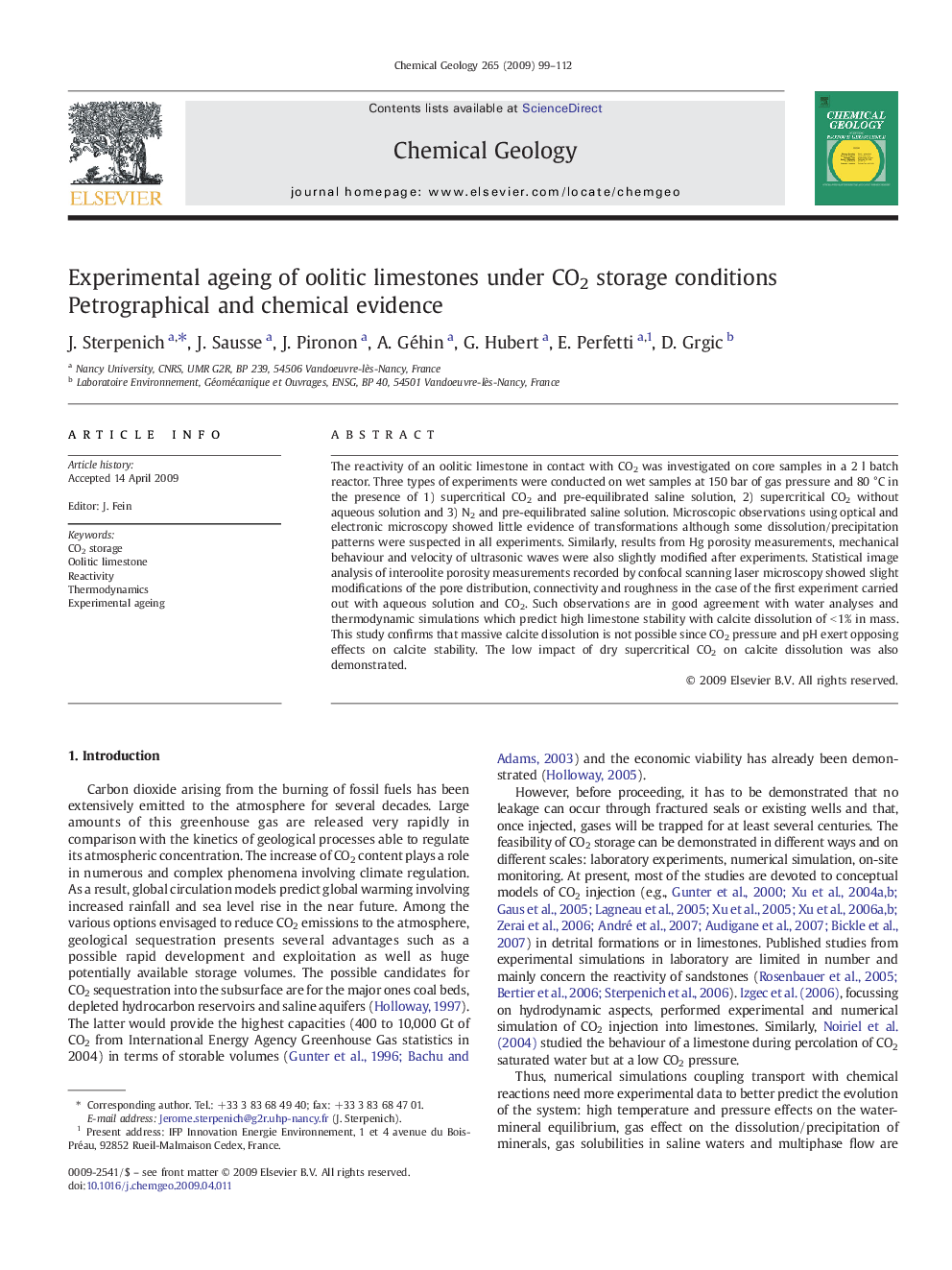| Article ID | Journal | Published Year | Pages | File Type |
|---|---|---|---|---|
| 4700150 | Chemical Geology | 2009 | 14 Pages |
Abstract
The reactivity of an oolitic limestone in contact with CO2 was investigated on core samples in a 2 l batch reactor. Three types of experiments were conducted on wet samples at 150 bar of gas pressure and 80 °C in the presence of 1) supercritical CO2 and pre-equilibrated saline solution, 2) supercritical CO2 without aqueous solution and 3) N2 and pre-equilibrated saline solution. Microscopic observations using optical and electronic microscopy showed little evidence of transformations although some dissolution/precipitation patterns were suspected in all experiments. Similarly, results from Hg porosity measurements, mechanical behaviour and velocity of ultrasonic waves were also slightly modified after experiments. Statistical image analysis of interoolite porosity measurements recorded by confocal scanning laser microscopy showed slight modifications of the pore distribution, connectivity and roughness in the case of the first experiment carried out with aqueous solution and CO2. Such observations are in good agreement with water analyses and thermodynamic simulations which predict high limestone stability with calcite dissolution of < 1% in mass. This study confirms that massive calcite dissolution is not possible since CO2 pressure and pH exert opposing effects on calcite stability. The low impact of dry supercritical CO2 on calcite dissolution was also demonstrated.
Related Topics
Physical Sciences and Engineering
Earth and Planetary Sciences
Geochemistry and Petrology
Authors
J. Sterpenich, J. Sausse, J. Pironon, A. Géhin, G. Hubert, E. Perfetti, D. Grgic,
